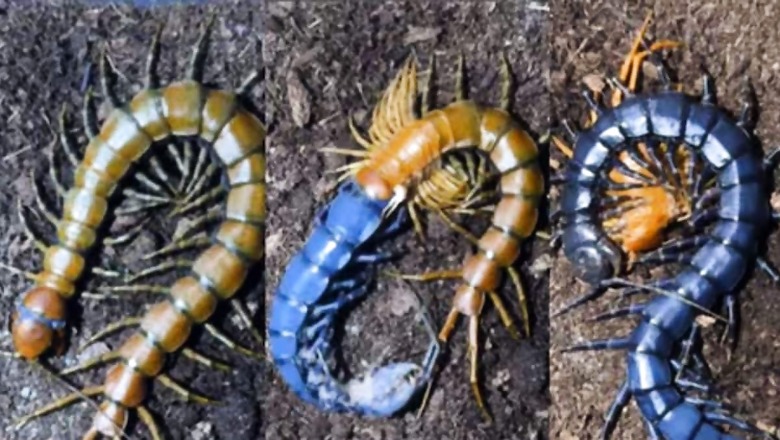
views
A clip of a centipede species named Scolopendra changing its colour quickly is gaining traction on social media. The video shows a yellow-coloured Scolopendra feeding on the soil. Suddenly, Scolopendra’s body near its head starts changing into blue. What transpired ahead is nothing short of a surprise. A major portion of the insect’s body quickly starts changing into blue. Another fascinating feature that social media users observe in Scolopendra is the black stripes on his body that become darker with the increasing blue colour. A careful look at the clip reveals that this colour keeps changing as Scolopendra continues eating the soil. Its tail and the tentacles located with it are orange in colour. “Scolopendra hainanum ‘Black’ Molting Time-Lapse", the video’s caption reads.
More about Scolopendra
1. Scolopendra is the largest centipede species in the world, with a length exceeding 30 centimetres.
2. Scolopendra species are active predators and feed primarily on insects and other invertebrates. Larger specimens of these animals have been observed preying on frogs, tarantulas, lizards, birds, snakes, rodents and even bats.
3. They are poisonous and usually do not bite humans unless provoked. Their bites result in severe pain, swelling, and redness at the affected site. These symptoms usually subside within 48 hours. Scolopendra commonly eats insects and worms.
A similar clip earlier surfaced on social media, in which a baby chameleon shows remarkable colour-shifting abilities. The clip captures the mesmerising transformation of the tiny chameleon. It fits snugly in a person’s palm and effortlessly changes its colour shortly after emerging. Even before taking its initial steps, the chameleon’s bright green skin undergoes a seamless transition into a different pattern. Within the short duration of the approximately one-and-a-half-minute video, the newborn chameleon appears distinctly different from its appearance at hatching.
This specific clip focuses on the early moments of a chameleon’s life. These animals typically showcase impressive abilities such as climbing, colour adaptation, and hunting almost immediately after birth. They lack parental guidance for these skills. As per the information from the San Diego Zoo, chameleons undergo rapid maturation. They reach full adulthood within a year after hatching.

















Comments
0 comment